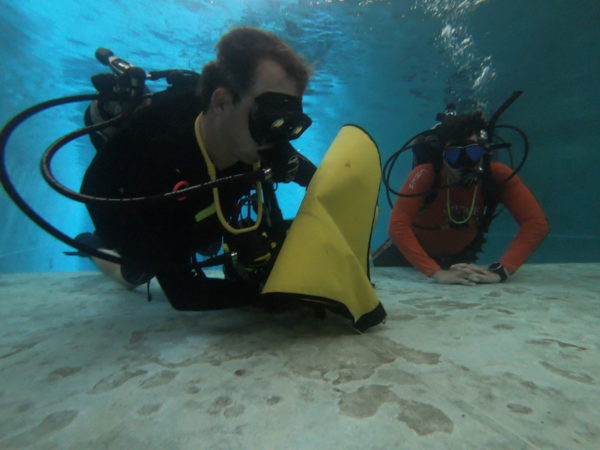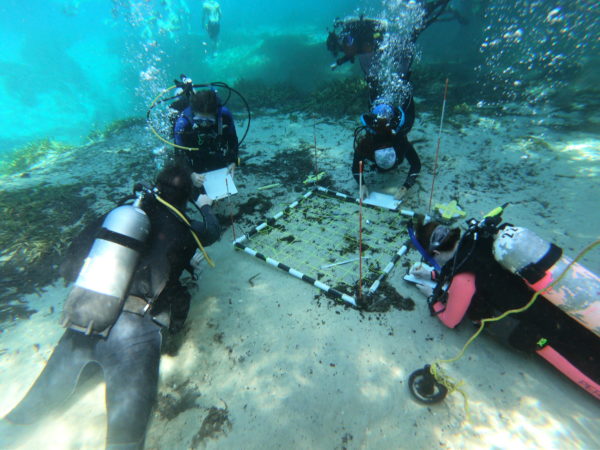This is a post by Allyson Ropp, Archaeologist at the St. Augustine Lighthouse and Maritime Museum
The St. Augustine Lighthouse & Maritime Museum houses an extensive maritime archaeology program, known as the Lighthouse Archaeological Maritime Program (LAMP). The program focuses on identifying and documenting the submerged maritime heritage of St. Augustine. Through site investigation, limited excavation, and conservation, the program works in conjunction with the Lighthouse to bring these discoveries to the public through a number of programs.

The flagship outreach program is the annual underwater archaeology field school that has occurred every summer since 2007. The field school brings in students from around the country (with the occasional international student) to learn the principles and methodologies of underwater archaeology. The students partake in a week-long scientific diver training program to get them accustomed to working in limited visibility environments, conducting scientific endeavors, and using underwater archaeology methodology. The remainder of the field school provides the students with the opportunity to put their newly acquired skills to use while working on an 18th-century shipwreck site. Not only does this program provide an opportunity for students to learn about archaeology through a classroom setting, it also offers a hands-on real-world learning environment in which they participate in on-going research. You can learn more about this underwater archaeology field school by clicking here.

The program also supports additional outreach programs to support the Lighthouse itself. The Lighthouse, with support of LAMP, offers daily archaeology demonstrations that discuss the methods of underwater archaeology from remote sensing to excavation and identifying objects underwater to artifact conservation. These demos include hands-on components and visual aids that bring these different steps to life and inspire visitors, young and old alike, to use critical thinking and observation to participate in the process. Furthermore, for school groups, we offer a Shipwreck CSI program. This program offers students a chance to become maritime archaeologist through the identification of artifacts in concretions from a 1782 Loyalist vessel discovered off St. Augustine. Groups are given a concretion with corresponding x-ray to determine the contents. Once they have a guess, they match the objects inside with corresponding images of such objects to narrow a time, function, and nationality of the vessel. Using each group’s findings, the class tells the story of the shipwreck site.

The St. Augustine Lighthouse Archaeological Maritime Program and its partner the St. Augustine Lighthouse & Maritime Museum offer a multitude of ways for visitors and students to engage with maritime archaeology. To learn more about these programs and the Lighthouse itself, please visit http://www.staugustinelighthouse.org/. Applications for the upcoming underwater archaeology field school will be available in the near future.

